‘My Boyfriend Sold One of My Kidneys Then He Sold Me’: Trafficking in Nepal
A checkpoint along the Nepal-India border has become has one of the world’s busiest human trafficking routes. Now it is being policed by survivors who try to spot other potential victims
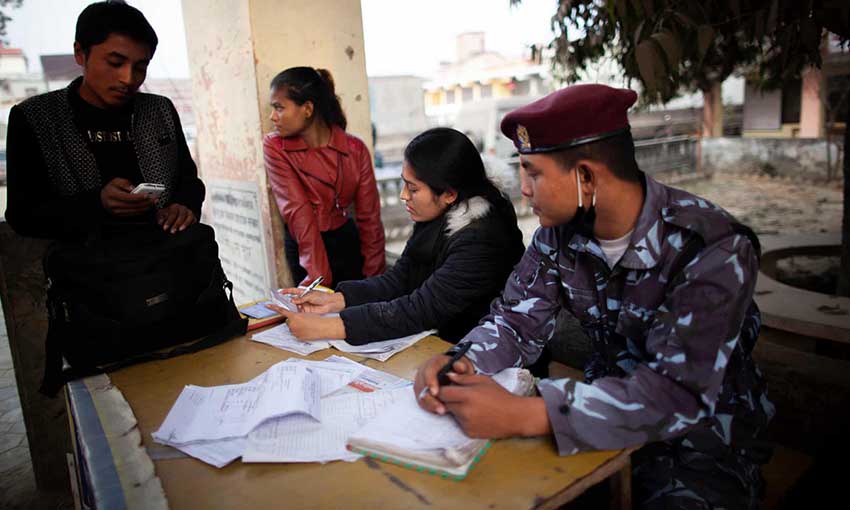
Pema, seen here sitting at a desk, was trafficked. Now she works with the police to protect others from suffering the same fate. Photo Credit : Ofelia de Pablo and Javier Zurita
It is midday in Bhairchawa, one of the 23 official border checkpoints between Nepal and India. Each day, up to 100,000 people cross under the stone arch separating the two countries. Some are on foot, others in trucks or on bikes, mopeds and rickshaws. Amid the chaos the people, the dust, the noise of traffic and honking of horns are the guardians: women who, having survived the horrors of human trafficking, now spend every day trying to spot potential victims and their exploiters among the crowds.
One of the women on duty today is Pema. While we talk, her eyes remain fixed on the crowds, scanning the throngs of people moving slowly across the checkpoint.
She is right to be vigilant. The 1,750km open and porous border between the two countries is a dream for traffickers and a nightmare for those trying to stop them. It has helped this crossing become one of the busiest human trafficking routes in the world.
More than 23,000 women and girls were victims of trafficking in 2016 according to the annual report published by the National Human Rights Commission of Nepal. However, numbers could rise to 40,000 Nepalese victims a year, according to NGOs in the field. Last year, a study conducted by Sashastra Seema Bal, the Indian armed border force, said detected cases of trafficking from Nepal to India had risen by 500% since 2013.
Pema says she knows how to spot potential victims because she was herself trafficked across this border when she was 11 years old. Born in a remote village in the north of Nepal, she was taken by a friend of her parents, drugged and sold into a brothel in India. Years of rape and torture followed until she was rescued by Maiti Nepal, an anti-trafficking charity, following a raid on the brothel.
Pema lived at a Maiti Nepal shelter and has since trained to become one of 39 trafficking survivors working for the organisation as border guardians. The group work at nine checkpoints between the two countries, in collaboration with border police.
Pema spots a man trying to cross the border, holding the arm of a girl wearing a red leather jacket. She is wearing high heels, and is stumbling, unable to walk properly. “She is dressed too elegantly … One of the things traffickers do is buy women new clothes, to gain their trust,” says Pema as she approaches them and asks for their IDs. The girl does not have any, and the man says he is a businessman working in India and that she is his girlfriend. They are taken aside; Pema and the border police start to question the man.
It turns out their fears are well-founded. The man is a classic “lover boy” fraudster, a man who has seduced a young girl on Facebook and convinced her to leave her family and run away together.
“He has a record,” says Pema. “He was trying to get her out of the country to sell her to a brothel. This happens every single day.”
When the girl learns the truth, she collapses in tears. She is taken to one of Maiti Nepal’s transit homes, where she will receive help and emergency accommodation until she can be taken back to her family.
“It is hard for them to take in the fact that their boyfriend is a trafficker who just wants to sell them,” says Sirta, another of the guardians. “The same thing happened to me. My boyfriend sold one of my kidneys and then he sold me. I am only alive today because I was rescued.”
Later we travel to the transit home and find another woman, Purnima, who is weeping after being stopped and rescued at the border by one of the guardians.
“I became a widow when my daughter was six days old. My parents-in-law mistreated me and I had to leave,” she says. “A female friend offered me a job in India. She said I would make a lot of money if I went with her. I believed her but was stopped at the border and now I know these women saved me.”
Anuradha Koirala, the founder of Maiti Nepal, says that they have seen a huge increase in the numbers of women and girls being duped into thinking they are going to a better life in India after the 2015 earthquake that ravaged large parts of Nepal.
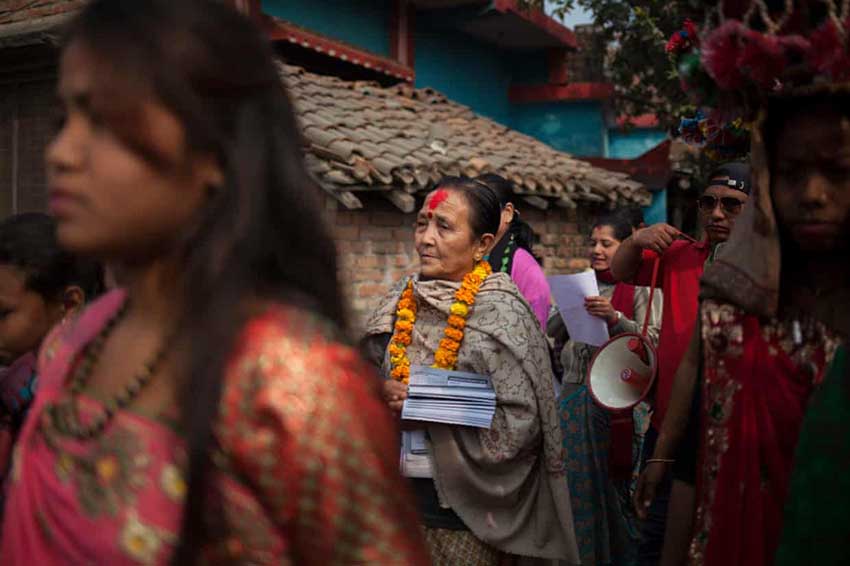 Anuradha Koirala is founder of Maiti Nepal, an anti-trafficking organisation. She goes from town to town, raising awareness.
Anuradha Koirala is founder of Maiti Nepal, an anti-trafficking organisation. She goes from town to town, raising awareness.“The earthquake hit many places where trafficking was already a huge problem,” she says. In the year after the earthquake, 4,000 women and girls were intercepted by the guardians at the border between Nepal and India.
“These are poor regions with high illiteracy rates. If a relative or friend turns up offering someone a job, it is often the girls’ parents themselves who encourage them to go, without realising what is really happening. It is the perfect breeding ground for traffickers.”
Outside, Pema chats and laughs with the other guardians. She says that she is happy to be spending her life trying to stop other women and girls falling into a life of misery and slavery. Yet, inside the shelter, Koirala says all the women working for them at this border are deeply traumatised by what they experienced in India.
“Their smiles are just a mask,” she says. “Pema has lost everything; she can laugh with you, but her heart is full of pain. The scars these young women bear will never disappear. We cannot just watch this happen to others. We must act, and act urgently.”
This article originally appeared on : The Guardian
Photo Credit : Ofelia de Pablo and Javier Zurita
-
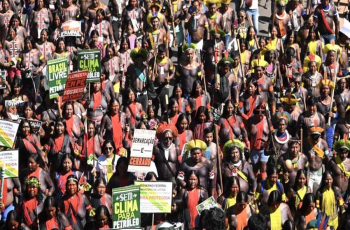
Indigenous people march in Brazil to demand land demarcation
2024-04-24 -
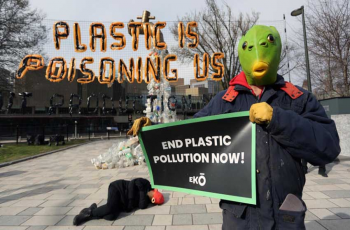
Talks on global plastic treaty begin in Canada
2024-04-24 -
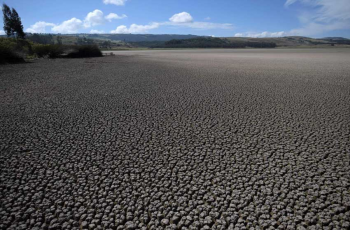
Colombian court recognizes environmental refugees
2024-04-24 -
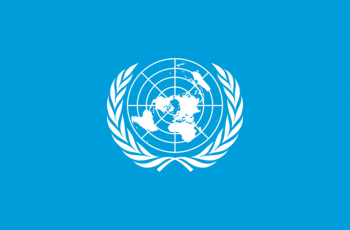
Asia hit hardest by climate and weather disasters last year, says UN
2024-04-23 -

Denmark launches its biggest offshore wind farm tender
2024-04-22 -

Nobel laureate urges Iranians to protest 'war against women'
2024-04-22 -
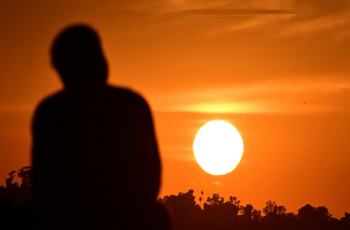
'Human-induced' climate change behind deadly Sahel heatwave: study
2024-04-21 -
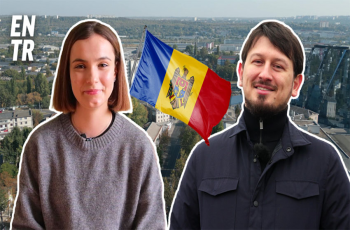
Moldovan youth is more than ready to join the EU
2024-04-18 -
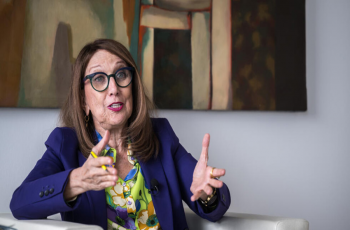
UN says solutions exist to rapidly ease debt burden of poor nations
2024-04-18 -
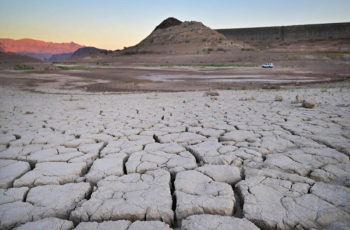
Climate impacts set to cut 2050 global GDP by nearly a fifth
2024-04-18

